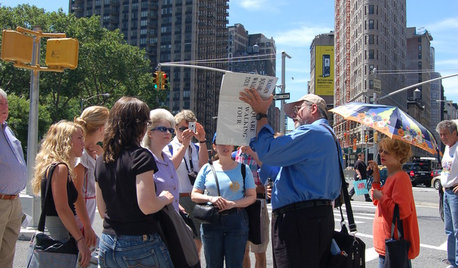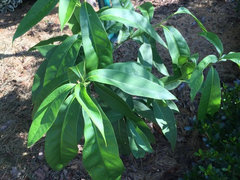unobtainium - list your top 5
davidrt28 (zone 7)
9 years ago
Featured Answer
Comments (58)
davidrt28 (zone 7)
9 years agogeorgeinbandonoregon
9 years agoRelated Discussions
What are the top 5 orchids on your wishlist?
Comments (20)Thanks for the input, Calvin. I know who has the Centroglossa, but I doubt it is divisable at this point anyhow even if he was willing. Growing Angraecoids got me interested in growing these other little monopodial species, mostly from Asia. Mount 'em and treat them like the Angs. I got an Aerangis unbonata and an Angraecum teretifolium from the Malala order this year (by Botanica). Both came through just fine; the unbonata is just kind of sitting right now but healthy and with some live roots, and the Ang teretifolium (some dispute if it is a linearifolium) never missed a beat and continues to push roots into the treefern mount -- not even a single leaf tip browned during its long voyage from Madagascar. With the currency exchange rate (the US$ vs. Euro) much better this year than last) the plants ended up about $35 each total with S&H, etc. Still a lot of money though. I think I only lost two; an Ang and a leafless. The Aeranthes henrici was an easy grower all the years I had it. All it took was water settling in the leaf axils one cool winter night -- and it was history. I originally got the plant from, of all places, Oak Hill. There are a lot of really nice Angraecoids out there for sale by online dealers - I try to keep track of them - but what I find is this dealer has one I want, another has one I want, another has two I want -- I just don't want to place such a small order and pay an entire shipping bill. I'm cheap; I'm mostly Scot and it shows....See Moretop 5 wish list for 2007
Comments (22)House of Hosta is located just outside of Green Bay. He doesn't have a website, but I think he does mail order. They have a great selection of hostas at very, very resonable prices. Here is a link that might be useful: Here is some information...See MoreYour worm's top 5 favorite foods.
Comments (24)hummersteve: I can imagine the worms won't take to baked potatoes leavings right away. I don't bake my potatoes but may I suggest you "age" your baked potato leavings in a container with some liquid. Once it's mushy, I'm sure the worms will be all over it. I micro-waved potato peels (I know, waste of energy) for a few minutes and then let them sit for about a week or so before adding to the worm bin....See MorePost your top 5 on your wishlist!
Comments (49)No I haven't seen them more mature than shown on the OOA site. It's amazing! Those two others are also quite nice. Though fusiformis is not too exciting to me. globocaulis is nice and I would love one some day, but it's not quite what I look for. Hard to define what it is I'm looking for, but I know it when I see it :D...See Moredavidrt28 (zone 7)
9 years agogeorgeinbandonoregon
9 years agopoaky1
9 years agohairmetal4ever
9 years agoSocal2warm
9 years agoscotjute Z8
9 years agofrank1965
9 years agostrobiculate
9 years agodavidrt28 (zone 7)
8 years agoviper114
8 years agolast modified: 8 years agobrandon7 TN_zone7
8 years agodavidrt28 (zone 7)
8 years agoDave in NoVA • N. Virginia • zone 7A
8 years agolast modified: 8 years agodavidrt28 (zone 7)
8 years agodavidrt28 (zone 7)
8 years agolast modified: 8 years agoDave in NoVA • N. Virginia • zone 7A
8 years agolast modified: 8 years agoHuggorm
8 years agodavidrt28 (zone 7)
8 years agolast modified: 8 years agoEmbothrium
8 years agolast modified: 8 years agotreeguy123
8 years agolast modified: 8 years agohairmetal4ever
8 years agoDave in NoVA • N. Virginia • zone 7A
8 years agohairmetal4ever
8 years agolast modified: 8 years agopoaky1
8 years agodavidrt28 (zone 7)
8 years agolast modified: 8 years agohairmetal4ever
8 years agopoaky1
8 years agodavidrt28 (zone 7)
8 years agodavidrt28 (zone 7)
7 years agolast modified: 7 years agoLogan L Johnson
7 years agotlbean2004
7 years agoLogan L Johnson
7 years agoindianagardengirl
7 years agobrandon7 TN_zone7
7 years agolast modified: 7 years agopoaky1
7 years agobrandon7 TN_zone7
7 years agodavidrt28 (zone 7)
7 years agolast modified: 7 years agotlbean2004
7 years agodavidrt28 (zone 7)
7 years agoLogan L Johnson
7 years agotlbean2004
7 years agoLogan L Johnson
7 years agodavidrt28 (zone 7)
7 years agobrandon7 TN_zone7
7 years ago
Related Stories

5 Top Design Events: Dec. 1-Dec. 23, 2011
Pop-up shops, holiday home tours and more: See what's on the Houzz list of things to see and do
Full Story0

EVENTS5 Top Design Events: Nov. 18-Dec. 9, 2011
Mark your creative calendars! See what's on the Houzz list of events to see and do
Full Story
EVENTSDesign Calendar: 5 Top January Events
California design, Eames chair collection and more: See what's on the Houzz list of things to see and do in January, 2012
Full Story0

EVENTS5 Top Design Events: Dec. 9-Jan. 13, 2011
Book signings, an ice hotel and more: See what's on the Houzz list of things to see and do now
Full Story0

EVENTS5 Top Design Events: Nov. 4–Nov. 25, 2011
Get out and get inspired! See what's on the Houzz list of things to see and do this month
Full Story0

EVENTS5 Top Design Events: Dec. 23, 2011 - Jan. 27, 2012
Architecture walking tours, 9/11 Memorial lecture and more: See what's on the Houzz list of things to see and do now
Full Story0

EVENTS5 Top Design Events: Nov. 11-Dec 2, 2011
Mark your creative calendars! See what's on the Houzz list of things to see and do
Full Story0

LIFEThe Top 5 Ways to Save Water at Home
Get on the fast track to preserving a valuable resource and saving money too with these smart, effective strategies
Full Story
EVENTS7 Top Design Events: Sept. 9-30, 2011
Get out and get inspired! See what's on the Houzz list of things to see and do this month
Full Story
EVENTS6 Top Design Events: Oct. 14-Nov. 4, 2011
Mark your creative calendars! See what's on the Houzz list of things to see and do
Full Story0







poaky1